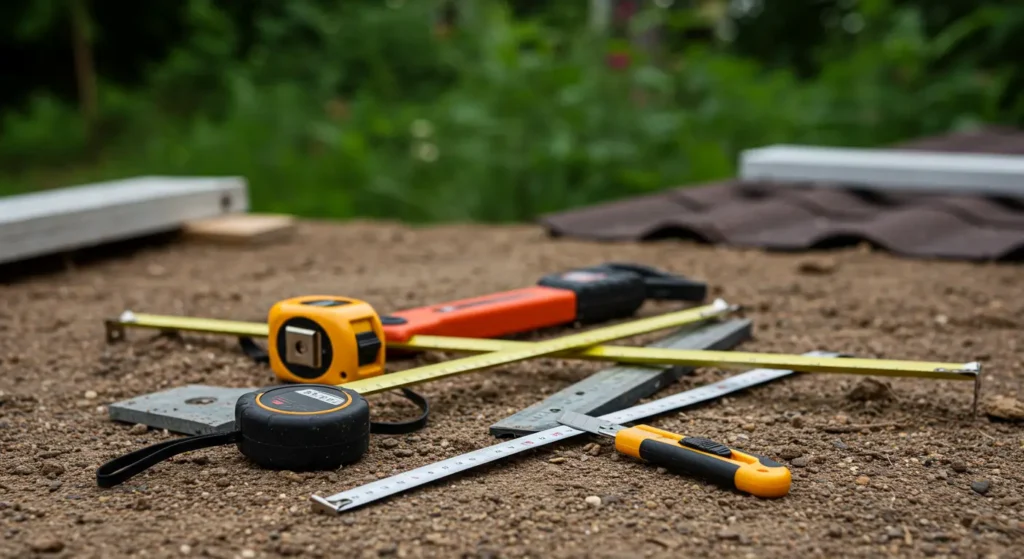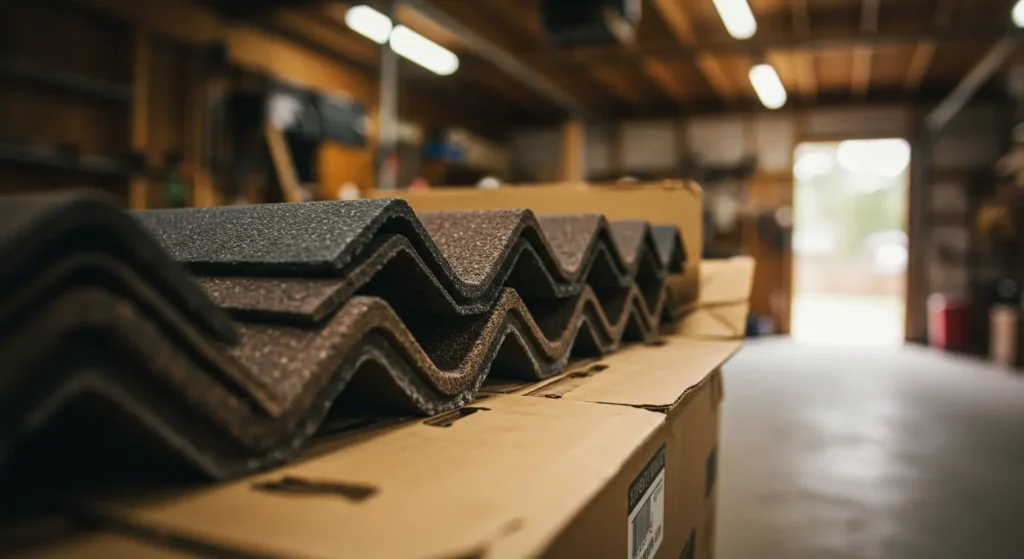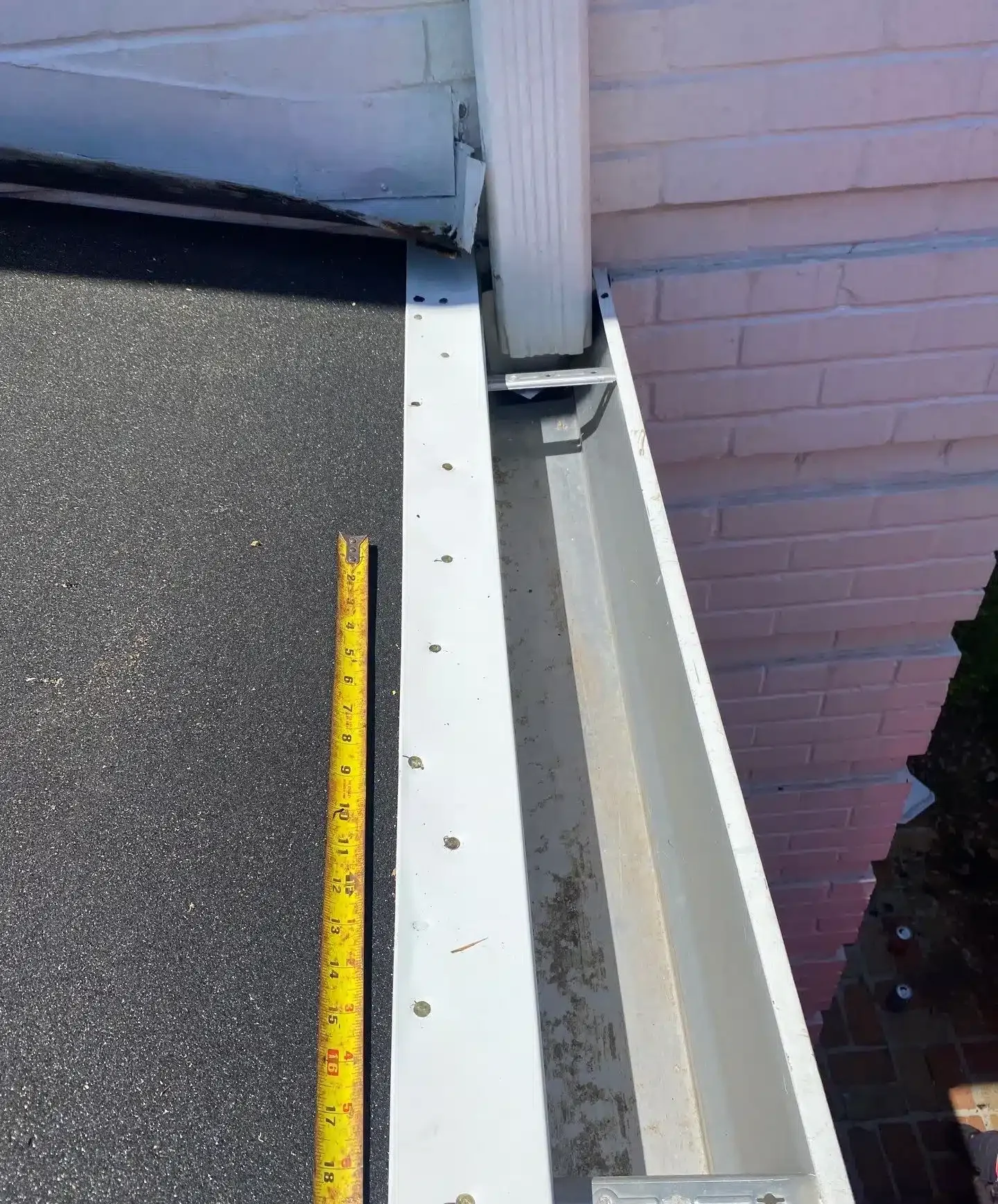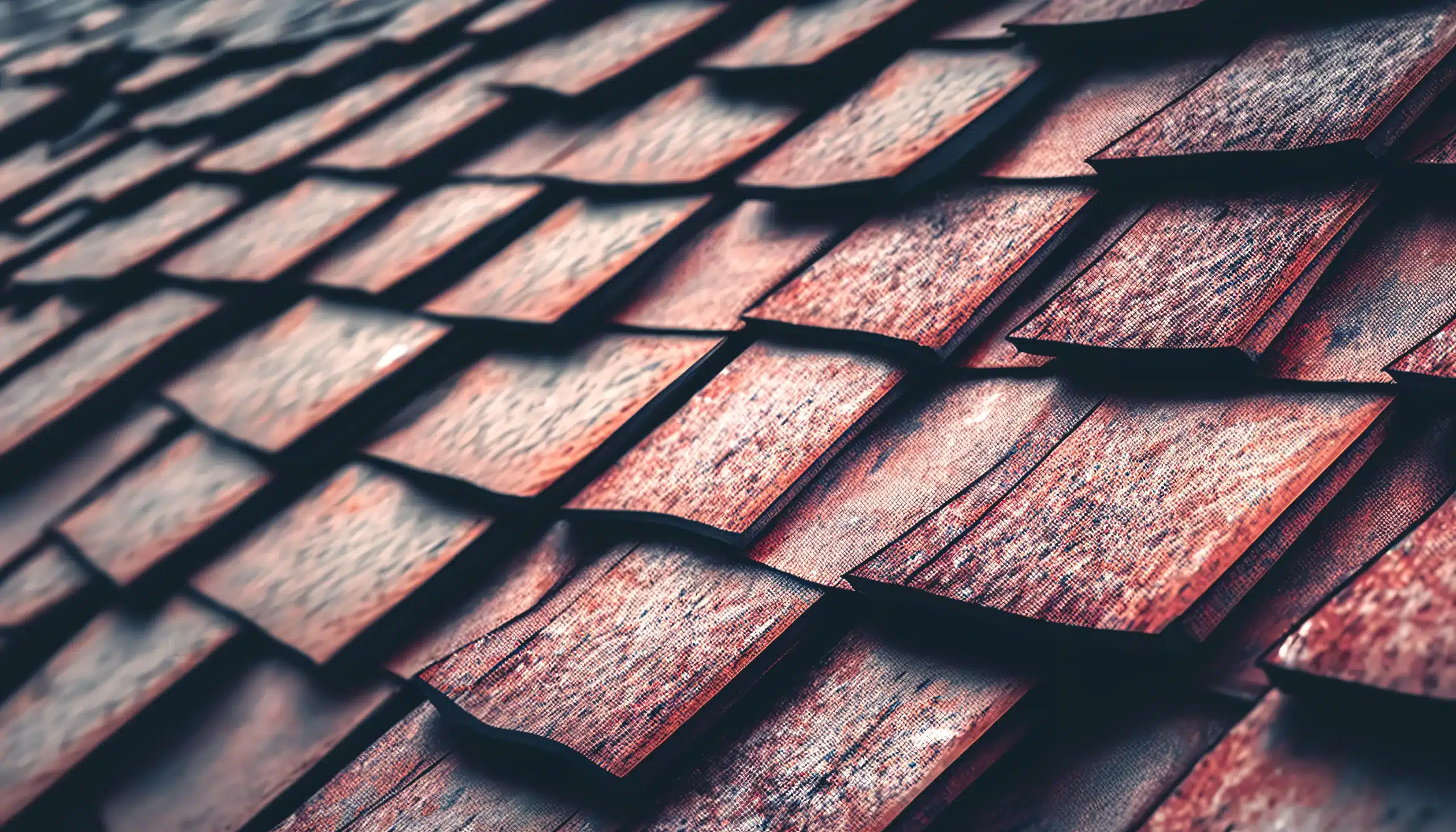Before you can start a roof replacement or repair project, it’s essential to know how to measure your roof accurately. Whether you plan to DIY the job or simply want a better understanding before hiring a contractor, accurate roof measurement helps you avoid costly mistakes, overspending, or material shortages. This guide will walk you through how to measure a roof for shingles like a pro, with tips, tools, formulas, and safety advice.
Measuring your roof properly also helps you compare contractor quotes more confidently, understand your roofing estimate better, and ensure your insurance adjuster provides a fair damage assessment. Perhaps most importantly, it allows you to calculate how many shingles you need and budget more accurately for your roofing project.
Related Reading: How to Repair Roof Shingles
Tools You Need to Measure a Roof Accurately

Gather the following tools before you begin:
- Measuring tape (at least 25 ft): A retractable tape measure is essential for getting accurate dimensions of roof planes.
- Ladder (rated for roof access): Choose a sturdy ladder tall enough to reach your roofline safely.
- Roof pitch tool or smartphone pitch app: These tools help determine your roof’s slope, which affects the surface area.
- Calculator: For quick math when calculating area, pitch, and converting into roofing squares.
- Graph paper or roofing app: Helpful for sketching out your roof layout and calculating surface area.
- Safety harness and non-slip shoes: If you need to climb on your roof, always prioritize safety.
Alternatively, digital tools like Sketch My Roof or other roof measurement calculators can provide precise results without climbing. These options are especially valuable for homeowners uncomfortable with heights.
How to Measure Roof Square Footage Step by Step
Step 1: Sketch Your Roof Layout
Start by drawing a rough sketch of your roof. Break it down into simple shapes like rectangles and triangles to make measurements easier. You can do this on graph paper or digitally using a roofing app.
Step 2: Measure Each Section
Measure the length and width of each section. Use the formula:
Length x Width = Area
Write down the square footage for each shape, then add them together to get the total roof area.
Step 3: Calculate Roof Pitch
Your roof pitch, or slope, affects how much material you’ll need. Use a pitch gauge or measure 12 inches horizontally and note the vertical rise. For example, a 6/12 pitch rises 6 inches vertically for every 12 inches horizontally.
Use this pitch factor table to adjust for slope:
| Pitch | Multiply Area By |
| 3/12 | 1.03 |
| 4/12 | 1.06 |
| 5/12 | 1.08 |
| 6/12 | 1.12 |
| 7/12 | 1.16 |
| 8/12 | 1.20 |
Total Area x Pitch Factor = Adjusted Roof Area
This step ensures you’re accurately calculating the surface area, not just the footprint.
Related Reading: How to clean a shingled roof
Converting Area into Roofing Squares and Bundles
Roofing materials are sold in “squares.” One roofing square equals 100 square feet.
Adjusted Roof Area / 100 = Roofing Squares
Shingles are typically packaged in bundles. Usually, three bundles equal one square.
Roofing Squares x 3 = Bundles of Shingles Needed
Add an extra 10–15% for waste, especially for roofs with valleys, dormers, or complex layouts. This ensures you have enough materials for cuts, overlaps, and minor errors.
How to Measure Your Roof from the Ground
Don’t want to climb a ladder? No problem. You can estimate your roof area from the ground:
- Measure your home’s length and width.
- Add for overhangs (usually 1–2 feet on each side).
- Determine your roof pitch.
- Multiply your base area by the appropriate pitch factor.
This gives you a reasonably accurate estimate. Combine this method with a roof measurement calculator for better precision.
Using Apps and Satellite Tools
If climbing isn’t an option, consider using satellite-based apps like RoofSnap, EagleView, or Sketch My Roof. These tools generate virtual measurements using aerial imagery.
Pros:
- No climbing or equipment needed
- Quick turnaround
- Ideal for getting multiple quotes
Cons:
- May miss small roof features
- Not always 100% accurate for complex rooflines
These tools are best for estimates, comparisons, or DIY projects where extreme precision isn’t critical.
Check these Roofing Guidelines by the National Roofing Contractors Association for a better approach
Common Mistakes to Avoid
Many homeowners make the same mistakes when measuring a roof:
- Forgetting the pitch factor: Flat dimensions aren’t enough.
- Not adding a waste factor: Running short delays projects and increases costs.
- Overlooking dormers and valleys: These features affect surface area.
- Using exterior walls instead of rooflines: Measurements should follow the actual roofing layout.
- Trusting a single measurement: Always double-check your math and dimensions.
Avoiding these mistakes can help you save time, money, and unnecessary stress.
Final Thoughts

Learning how to measure a roof for shingles is a crucial step in any roofing project. From choosing the right tools to applying the correct formulas, this process ensures your roofing estimate is as accurate as possible. Whether you’re tackling a DIY job or simply want to be informed before hiring a professional, knowing how to measure your roof gives you the confidence to make smart decisions.
If you’re uncertain or want expert accuracy, book a free roof inspection today. Our experienced team will provide precise measurements, clear estimates, and peace of mind.
FAQs About Measuring Roofs for Shingles
How do I measure my roof for shingles from the ground?
Use the building footprint, add overhangs, and apply the pitch factor. Combine this with online tools for improved accuracy.
How many bundles of shingles do I need?
Divide your adjusted roof area by 100 to get roofing squares. Multiply that by 3 for bundles, and add 10–15% for waste. Visit this guide by IKO for detailed tips.
What is a roofing square?
A roofing square is a standard unit of measurement equal to 100 square feet of roof surface. Contractors and suppliers use this to determine how many shingles you’ll need.
Can I measure my roof without climbing on it?
Yes. Use satellite tools or ground-based estimates with pitch factor adjustments. These methods are great for safer DIY planning.
How accurate are roof measurements with satellite tools?
Satellite tools are generally accurate for simple roofs. For complex layouts, double-check with the manual or professional methods.
Do I need to include waste when I calculate the shingles needed?
Yes. Always include 10–15% for waste to cover cutting, overlapping, and errors. Skipping this can lead to material shortages.
What tools can help me measure my roof digitally?
Roof measurement calculator apps like RoofSnap, Sketch My Roof, or EagleView are excellent for remote measurements.
Need Help with Roof Measurements? Book a Free Roof Inspection Today.







